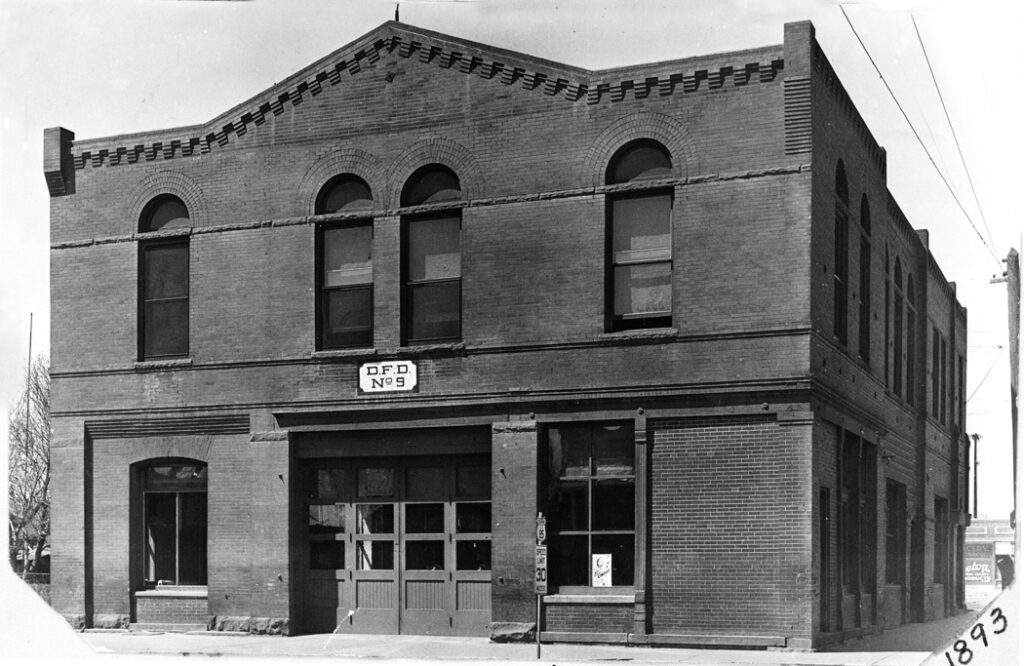By Mary Lou Egan
Denver Fire’s Station 9 at 4400 Brighton Blvd. had its beginning in 1894 in the Elyria Town Hall on 47th Avenue and Gilpin Street.

The two-story building was constructed in the Romanesque style, which was meant to inspire awe with its round arches, massive stone walls and brickwork. Offices for the town council, police magistrate, city clerk, fire department and a jail were on the first floor.
The second floor contained a large public hall that held dances, traveling shows, local theatrical productions and boxing matches.
Elyria Hose Company No. 1 provided fire protection with a volunteer force. In 1904, Elyria, Swansea and Globeville became part of Denver and professional firefighters from Denver moved into the building.
A kitchen was added, the second floor was used as a dormitory and stalls were built in the rear for horses. The firefighting apparatus, “Engine 9,” was a steamer and a hose wagon. When the station received its first motorized equipment, the doors had to be enlarged and the crew had to respond from Brighton Boulevard to avoid the streetcar line.
Station 9 would serve Elyria, Swansea, Globeville and the stockyards in this location for 35 years. In 1939, the Federal Emergency Management Administration built a no-nonsense, utilitarian structure at 4600 Franklin and the former fire station was demolished.
The crews would battle blazes in the railyards, meat-packing operations, chemical plants, box companies and one in the stockyards that took nearly three weeks to completely extinguish. In 1956, an Army bomber crashed in a field near Stapleton Airport, and Captain Lew Gallagher and O. V. Wilson entered the burning plane to rescue the trapped bombardier. Gallagher and Wilson were awarded the Civilian Service Medal for bravery.
The 1965 Platte River Flood was another challenge. Ed Westerkamp remembered, “I was assigned to Station 9 then. You could see fire and smoke in Globeville where a house at 4777 Logan had exploded. Matt and Olga Davidovich left during the flood but returned after the crest had passed.

When Olga lit the stove to fix breakfast, gas that had accumulated ignited and they were both seriously burned. Later I called the hospital to see how they were doing.
Olga was going to make it, but Matt had died. I felt so bad about that.” When I-70 was constructed in the 1960s, Station 9 was hemmed in below the elevated highway and would eventually have to relocate. That story will continue next month.
Mary Lou Egan is a fourth-generation Coloradan who loves history. You can reach her at maryloudesign@comcast.net.

Be the first to comment